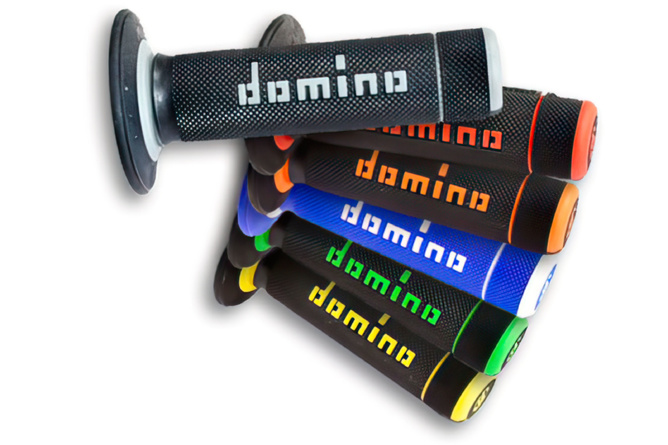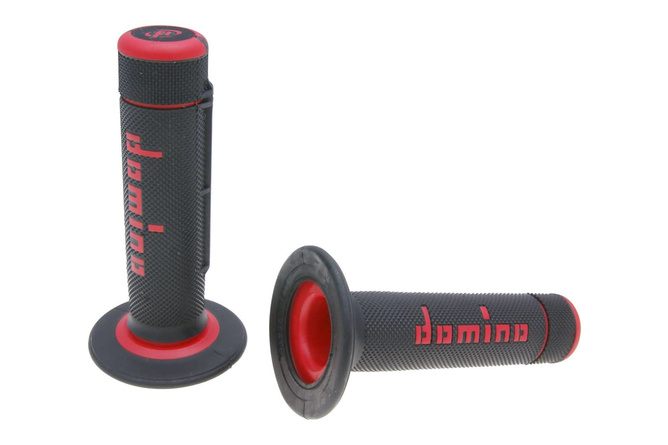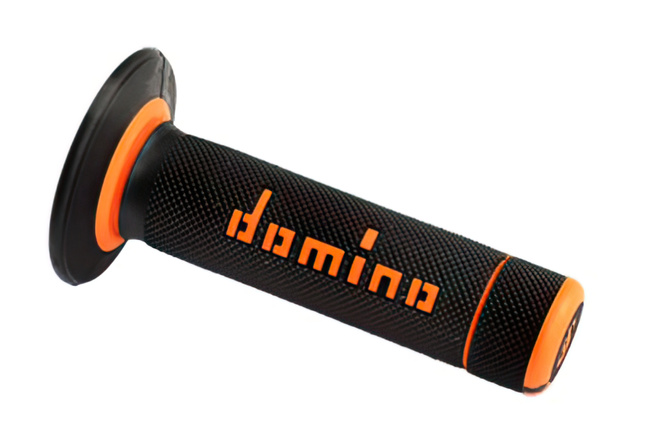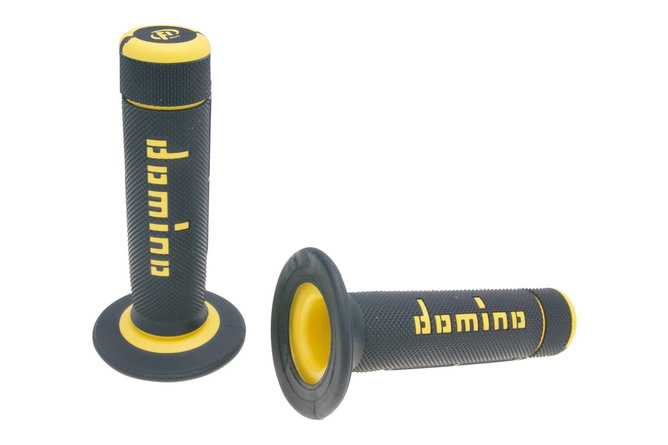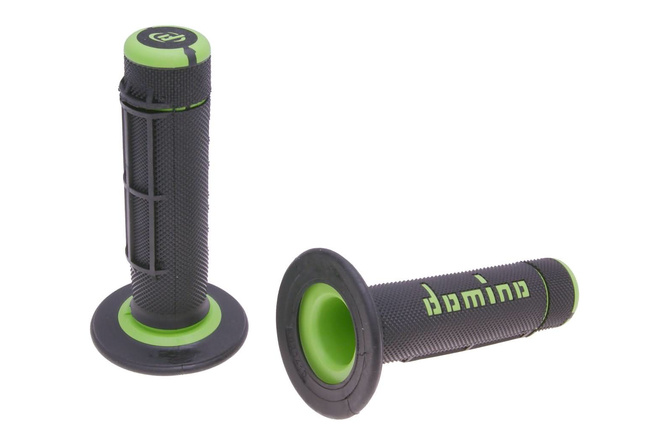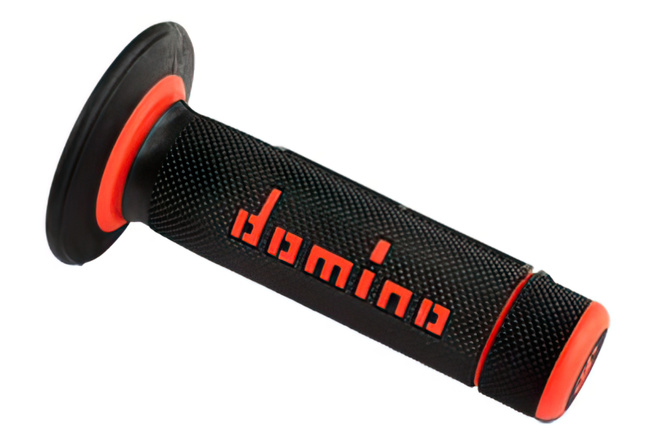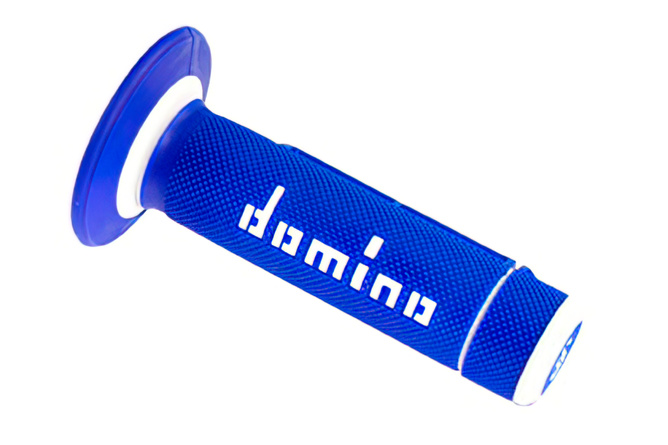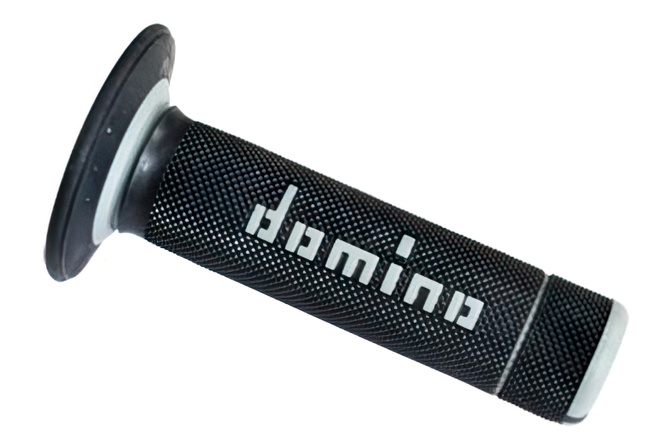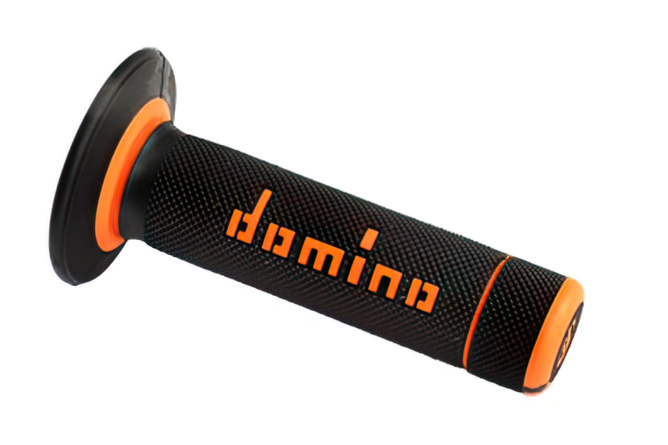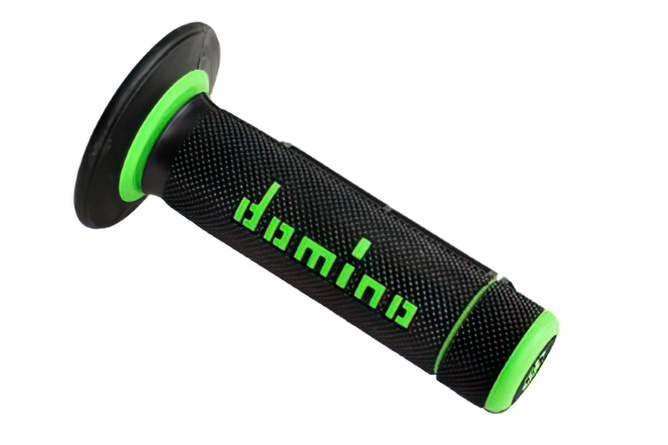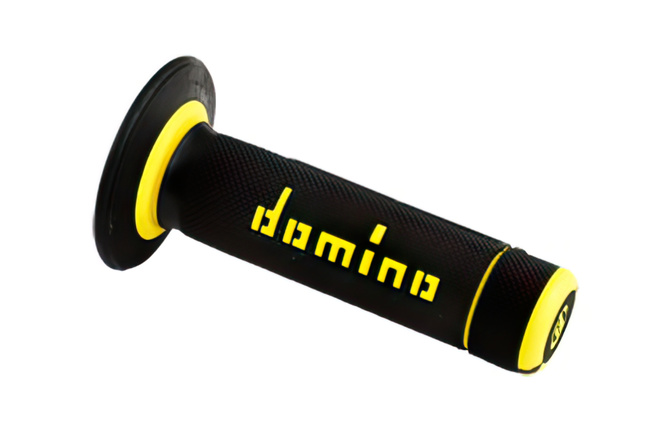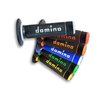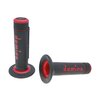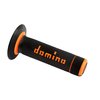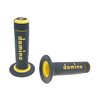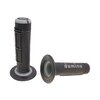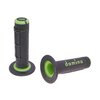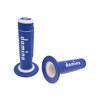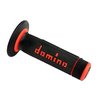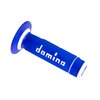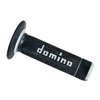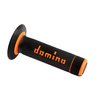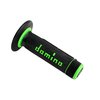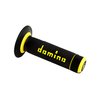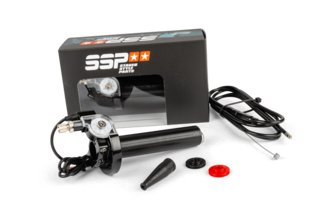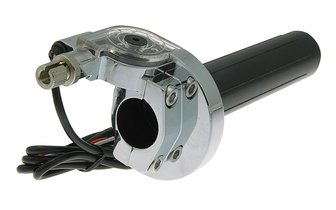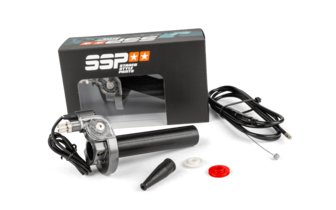Motorcycle and scooter grips
Handlebar grips have a critical impact on the handling of a two-wheeler and ensure the rider's comfort. Grips should offer a compromise between grip, softness and strength to ensure durability, comfort and support for the rider. Riding comfort can even be improved by fitting handguards (which protect against cold and splashes).
Choosing the right grip for scooter, moped and motorcycle
Scooter, motorcycle or moped grips wear out over time. You can replace worn grips with standard / original grips or opt for a more ergonomic and visually appealing model. Grips have different surface textures, so you can find the right grip for every sport and every taste. They are also available in different materials to increase riding comfort.
Fitting rubber grips
Tools required: Depending on which type of grip you choose and how the grips are fitted, you will need different tools. It is best to have a screwdriver, a cutter knife, lubricant (if necessary), degreaser and possibly a set of Allen keys to hand.
- Remove the old grips: The old rubber grips can be removed in 2 ways. You can use a slotted screwdriver, push it inside and then spray with degreaser or even lubricant to loosen the grips and slide them off the handlebars without damaging them.
You can also use a box cutter to carefully cut them off. Be careful not to damage the handlebars.
For lock-on grips, loosen the clamp bolt with an Allen key and slide the grip out. On the throttle side, you must remove the throttle grip in order to pull out the sleeve completely. - Clean the handlebar with a cloth and grease remover. Also clean the throttle grip if you have removed it (lock-on grips).
- Install the new grips:
* Standard grips: Simply slide the new grips onto the handlebar. You can use a grease-dissolving spray such as brake cleaner or soap water
to make the process easier. Then wait 12 to 24 hours until the agent has evaporated and the grips no longer slip.
You can also attach the grips with a special grip glue, which makes fitting easier and prevents twisting once dry.
*Lock-on grips: Simply slide the grip on and tighten the screw of the clamp. On the throttle side, you must put the throttle cable or cables back onto the cam provided and snap this cam into the sleeve of the new grip, making sure that the cam sits correctly so that the grip is correctly aligned.
Useful note: Some handlebars have molded "spikes" to prevent the left grip from slipping off. This type of handlebar is not designed for lock-on grips and can therefore cause difficulties. However, you can easily sand down these spikes with sandpaper, but be careful not to sand down too much! It is best to try until the lock-on grip fits without excessive force.
- Adjust the position: Once the new grips are in place, you can adjust the position to suit your preference and shape.
- Fixing the grips: To prevent rotation on the handlebars (if you're not using glue or have lock-on grips), you can use locking wire. The wire must be pressed firmly around the grip with pliers.
This method is particularly suitable for racing bikes / intense use. - Finish: Before you set off, you should make sure that the grips are not slipping on the handlebar! If necessary, cut off the excess brake wire (make sure that there is nothing sticking out that could injure your hand). Also make sure that the throttle can be operated without effort and returns to its starting position spontaneously and without assistance.
